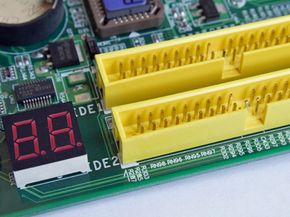Troubleshooting a Dead Drive
When your drive seems to have given up the ghost, there are some steps you can take to determine where the problem lies. If your computer is running Windows, the first thing you should do is reboot the computer and go into the basic input/output system (BIOS). Usually you do this by pressing the Delete key during the boot-up sequence -- watch for on-screen prompts. BIOS has a utility that autodetects drives. Run this and see if the drive shows up. If it doesn't, there may be a problem with the connections between the drive and the motherboard. Check all those connections.
If the drive does show up, then you can run some more diagnostic tests. You'll need another functional computer to accomplish most of these, unless you've planned ahead. Find the model number and manufacturer of your hard drive. Go to the manufacturer's Web site and look for the company's proprietary diagnostic software. You'll have to download and then burn it to a CD-ROM or save it to a floppy disk, depending on what the "dead" computer is equipped with. Boot the dead computer from the diagnostic disk and run it. The diagnostics should give you some indication of what the problem is, although sometimes it will find no problems, even though the drive is still not working.
Advertisement
You can also create a bootable virus scan disk and scan the dead drive for any viruses that might be causing the problem. If your computer is infected, you may be able to use the virus scan disk to repair the problem as well.
If all has gone well, at this point you should have a rough diagnosis. You might not know exactly what's wrong, but at least you've ruled some things out and narrowed it down. But what if none of those troubleshooting steps worked? Try connecting the drive to another computer, one that you know works. This will let you know if the problem is really with the drive itself.
Also, open your computer's case and listen closely to the drive when you boot up the computer. Is it totally silent? That means the platters aren't "spinning up," indicating a serious mechanical problem. Does it make any of the warning sounds we mentioned earlier? Remember, these are also a sign of mechanical failure. If it sounds perfectly normal (generally, a steady hiss as the platters spin and internal cooling fans activate -- although different drives make different sounds), then the problem is probably not mechanical.
In the next section, we'll explore some different ways to repair a hard drive.
